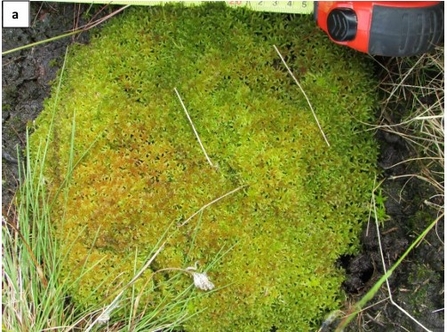The study by Moors for the Future Partnership was carried out to discover the most effective methods of planting various species of sphagnum. Based on the findings, the Partnership can tailor delivery of conservation works to bring maximum benefit to the uplands. Single-species sphagnum plugs that were initially planted for aerial imagery capture and image classification by Moors for the Future Partnership, also provided an opportunity to monitor the growth of the individual species by tailoring the planting design.
One of the key aims of the MoorLIFE2020 project is to reintroduce sphagnum into areas where it has been lost over time; the Partnership use commercially grown small plants, or “plugs” to achieve this. The research and monitoring team have studied the results across certain areas over 16 months; the study took place in bogs dominated by three different moorland plant species: cottongrass, purple moor grass and heather. The growth of the plugs was recorded in summer 2020.


